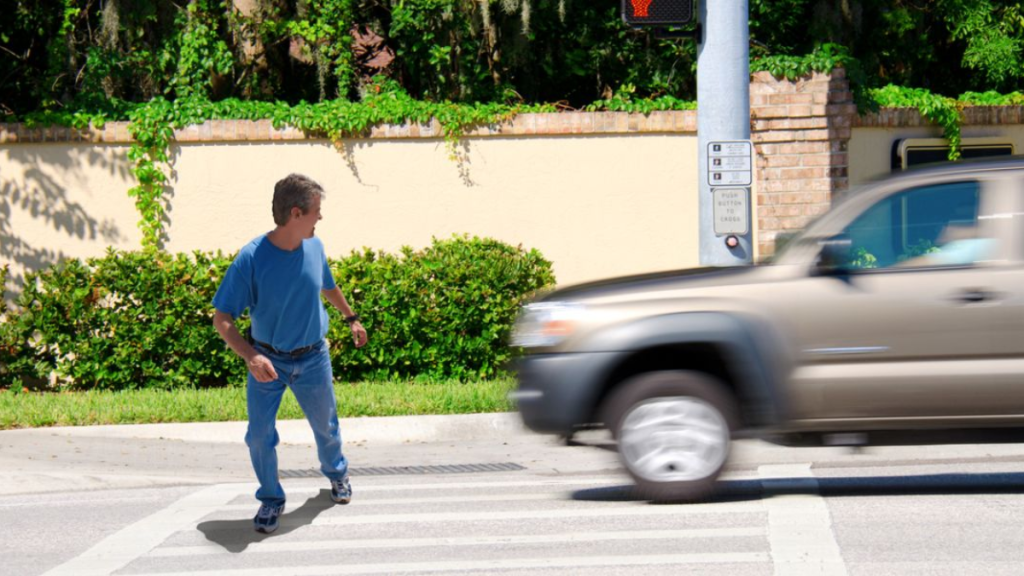Walking in Wisconsin has become increasingly dangerous in recent years, as the state grapples with a sharp rise in pedestrian injuries and fatalities. According to data from the Wisconsin Department of Transportation (WisDOT), pedestrian deaths reached alarming levels in 2023, continuing an upward trend that began during the COVID-19 pandemic.
The surge in traffic-related fatalities has prompted concerns among safety advocates and local leaders, who say urgent changes are needed to protect people on foot.
In 2023 alone, Wisconsin recorded more than 60 pedestrian fatalities, up from 50 the previous year. While this number may seem modest compared to larger states, it represents a nearly 20% increase and signals a troubling decline in road safety standards.
Several urban centers—including Milwaukee, Madison, and Green Bay—have seen an especially sharp rise in incidents involving cars striking pedestrians.
A Perfect Storm of Risk Factors
Transportation experts cite several factors behind Wisconsin’s pedestrian safety crisis. The pandemic brought shifts in driving behavior, including increased speeding, distracted driving, and decreased enforcement of traffic laws.
With fewer cars on the roads in 2020 and 2021, many drivers developed riskier habits that have persisted even as traffic returned to pre-pandemic levels.
“People are still driving like the roads are empty,” said Emily Grimes, a public safety advocate with Wisconsin Walks, a nonprofit pushing for safer pedestrian infrastructure. “We’ve seen a serious rise in reckless driving, and pedestrians are paying the price.”
Other contributing issues include:
- Lack of pedestrian infrastructure: Many Wisconsin cities and towns have limited sidewalks, poorly marked crosswalks, and insufficient lighting.
- Urban sprawl and car dependency: Wisconsin’s spread-out communities often require driving, making walking less common and more dangerous.
- Limited public transportation: Fewer people using buses or trains means more pedestrian traffic near roadways and intersections, increasing risk.
Most Dangerous Areas for Pedestrians in Wisconsin
While rural areas also report pedestrian fatalities, urban centers remain the most dangerous for walkers. In Milwaukee, city officials reported 28 pedestrian deaths in 2023 alone.
Madison, despite being a college town with a significant pedestrian population, also saw an increase in accidents involving foot traffic.
Intersections without traffic signals, roads with multiple lanes, and areas near on- and off-ramps are particularly hazardous. In some neighborhoods, community members have placed makeshift memorials or “ghost shoes” at the sites of pedestrian deaths, calling attention to the human cost of poor urban design and lack of traffic enforcement.
State and Local Efforts to Improve Safety
In response to rising pedestrian fatalities, WisDOT launched a public safety campaign in early 2024 focused on educating both drivers and pedestrians about safe practices. The campaign includes radio ads, social media outreach, and community events.
However, critics argue that public awareness alone won’t fix the systemic problems contributing to the crisis.
Several municipalities have begun investing in “Complete Streets” programs, which aim to redesign roads with pedestrians, cyclists, and public transit users in mind. These initiatives include:
- Installing raised crosswalks and curb extensions
- Adding pedestrian-activated flashing lights at key intersections
- Reducing speed limits in residential and school zones
- Implementing pedestrian countdown timers on traffic signals
Milwaukee and Madison have also joined the national Vision Zero movement, a traffic safety initiative that seeks to eliminate all traffic fatalities and severe injuries through infrastructure changes and policy reform.

What You Can Do to Stay Safe
Pedestrian safety advocates encourage both drivers and walkers to take precautions. For pedestrians, basic steps such as using marked crosswalks, wearing reflective clothing, and avoiding phone distractions can significantly reduce risk. Drivers are urged to slow down, yield to pedestrians at intersections, and avoid distracted or impaired driving.
“Everyone has a role to play in reversing this trend,” said Chief Robert Kappel of the Madison Police Department. “We’re stepping up enforcement, but it’s also about public behavior. Too many lives are being lost because of preventable mistakes.”
National Trends Mirror Wisconsin’s Challenges
Wisconsin is not alone in facing a pedestrian safety crisis. Nationally, the U.S. saw over 7,500 pedestrian fatalities in 2022—the highest number in more than 40 years, according to the Governors Highway Safety Association (GHSA). Experts blame infrastructure design focused on cars, along with increased vehicle size and distracted driving.
For more insights into the national scope of pedestrian safety issues, visit the GHSA report on pedestrian fatalities.
Conclusion: Urgency Needed Before More Lives Are Lost
As Wisconsin grapples with rising pedestrian fatalities, experts say time is running out to act. While education and enforcement are essential, advocates argue that real change will require political will and investment in pedestrian-friendly infrastructure.
Whether walking to school, commuting to work, or simply enjoying a neighborhood stroll, residents of Wisconsin deserve to feel safe on their streets. Without swift and decisive action, the simple act of walking could remain one of the state’s most dangerous forms of transportation.
For more on pedestrian safety measures and local initiatives in Wisconsin, visit WisDOT’s pedestrian safety page.
Disclaimer – Our team has carefully fact-checked this article to make sure it’s accurate and free from any misinformation. We’re dedicated to keeping our content honest and reliable for our readers.
